 W
WThe Battle of Aiken occurred on February 11, 1865, as General William Tecumseh Sherman made his way across South Carolina. The principal commanders were Union Maj. Gen. Hugh Judson Kilpatrick and Confederate Maj. Gen. Joseph Wheeler. Wheeler was able to score a minor victory over Kilpatrick. Today an annual re-enactment is held the final full weekend in February.
 W
WThe Battle of Bolivar Heights was an early battle of the American Civil War. Bolivar Heights is a plateau which overlooks the towns of Harpers Ferry, West Virginia and Bolivar, West Virginia, then part of Virginia.
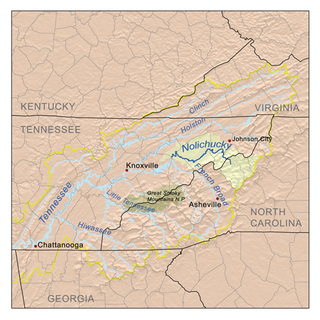 W
WThe Battle of Red Banks was an American Civil War battle that took place on December 29, 1864, between Union and Confederate forces. It took place at the Red Banks of the Nolichucky River in Unicoi County, Tennessee near the North Carolina border. Southern soldiers referred to the conflict as the Battle of the Bloody Chucky.
 W
WThe Battle of Brentwood was a battle of the American Civil War, occurring on March 25, 1863, in Williamson County, Tennessee.
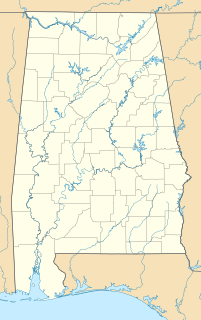 W
WSkirmishes at or near Bridgeport, Alabama between Union Army and Confederate States Army forces occurred on April 23, 27 and 29, 1862 during the American Civil War. A modern newspaper article called the April 1862 action the Siege of Bridgeport after a modern re-enactment event, although the actions are described as skirmishes by other sources such as Dyer (1908), Long (1971) and the U.S. National Park Service. Other skirmishes occurred at Bridgeport on August 27, 1862 and July 27, 1863, which involved an attack on a steamer. Union forces occupied Bridgeport after an engagement on July 29, 1863.
 W
WThe Battle of Clark's Mill was a battle of the American Civil War, occurring on November 7, 1862 on Bryant Creek just north of the community of Vera Cruz in central Douglas County, Missouri.
 W
WThe Battle of Cove Mountain was a minor skirmish of the American Civil War, fought on May 10, 1864, in the southwest corner of Virginia near Cove Mountain in Wythe County.
 W
WThe Battle of Darbytown Road was fought on October 13, 1864, between Union and Confederate forces. The Confederates were attempting to retake ground they had lost to Federal forces during battles near Richmond, Virginia. Their efforts failed. On October 13, Union forces advanced to find and feel the new Confederate defensive line in front of Richmond. While mostly a battle of skirmishers, a Federal brigade assaulted fortifications north of Darbytown Road and was repulsed with heavy casualties. The Federals retired to their entrenched lines along New Market Road.
 W
WThe First Battle of Donaldsonville took place on August 9, 1862, in Ascension Parish, Louisiana, as part of the Operations against Baton Rouge in the American Civil War.
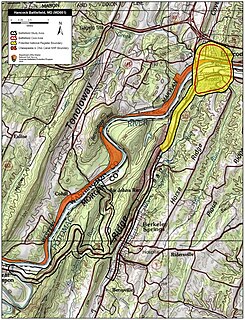 W
WThe Battle of Hancock, also called the Romney Campaign, was a battle fought during the Romney Expedition, occurred January 5–6, 1862, in Washington County, Maryland, and Morgan County, West Virginia, as part of Maj. Gen. Thomas J. "Stonewall" Jackson's operations against the Baltimore and Ohio (B&O) Railroad during the American Civil War.
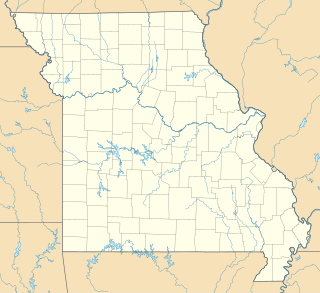 W
WThe Skirmish at Hunter's Farm was a battle of the American Civil War fought between the Union Army and pro-Confederate Missouri State Guard at Hunter's Farm near Belmont in Mississippi County, Missouri on September 26, 1861. A reconnaissance party of cavalry sent out by Brigadier General Ulysses S Grant succeeded in surprising a detachment of Brigadier General's Jeff Thompson's command.
 W
WThe Skirmish at Paint Rock Bridge was an action fought between a Union Army detachment of 27 men guarding a bridge near Woodville, Alabama and a Confederate States Army cavalry detachment intent on destroying the railroad bridge on April 28, 1862 during the American Civil War. Union Army brigade commander Colonel Joshua W. Sill reported that the men from the 10th Wisconsin Volunteer Infantry Regiment, commanded by Colonel Arnold R. Chapin, who were under the immediate command of Sergeant William Nelson and Sergeant Augustus H. Makimson held off the Confederate force of 250 men for over two hours and killed 7 Confederates and captured 1 wounded Confederate soldier who told the Union men of the Confederate numbers and casualties. The action resulted in the Union maintaining control of an intact railroad line through the area.
 W
WThe Battle of Pickett's Mill was fought on May 27, 1864, in Paulding County, Georgia, during the American Civil War between Union and Confederate forces. Union Maj. Gen. William Tecumseh Sherman attempted an attack on the right flank of Confederate Gen. Joseph E. Johnston.
 W
WThe Battle of Rocky Face Ridge was fought May 7–13, 1864, in Whitfield County, Georgia, during the Atlanta Campaign of the American Civil War. The Union army was led by Maj. Gen. William Tecumseh Sherman and the Confederate army by Gen. Joseph E. Johnston. Confederates were forced to evacuate their strong position due to a Union flanking movement.
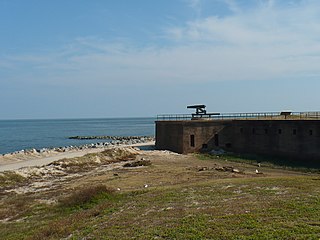 W
WThe Siege of Fort Gaines occurred between August 3 and 8, 1864, during the American Civil War. It took place in the Mobile Bay area of Alabama as part of the larger battle of Mobile Bay, and resulted in the surrender of the fort and its defenders.
 W
WThe Battle of South Mills, also known as the Battle of Camden, took place on April 19, 1862 in Camden County, North Carolina as part of Union Army Maj. Gen. Ambrose E. Burnside's North Carolina expedition during the American Civil War.
 W
WThe Battle of Suffolk at the Norfleet House Battery took place from April 13 to April 15, 1863, in Suffolk, Virginia, as part of Confederate Lieutenant General James Longstreet's Tidewater operations during the American Civil War.
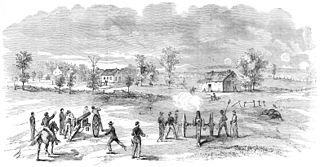 W
WThe Battle of Summit Point, also known as Flowing Springs or Cameron's Depot, was an inconclusive battle of the American Civil War fought on August 21, 1864, near Summit Point, West Virginia.
 W
WThe Battle of Swift Creek or Arrowfield Church was fought on May 9, 1864, between Union and Confederate forces during the American Civil War. Union forces were only partially successful: they inflicted damage on the local railroad, but further advance was halted.
 W
WThe Battle of Ware Bottom Church was fought on May 20, 1864, between Union and Confederate forces during the American Civil War. The Union troops were led by Benjamin Butler, while the Confederates were led by P.G.T. Beauregard. The Confederates were victorious, and Butler's forces remained in their Bermuda Hundred defenses. Following the battle, the Confederates began digging a critical set of defensive earthworks that became known as the Howlett Line.